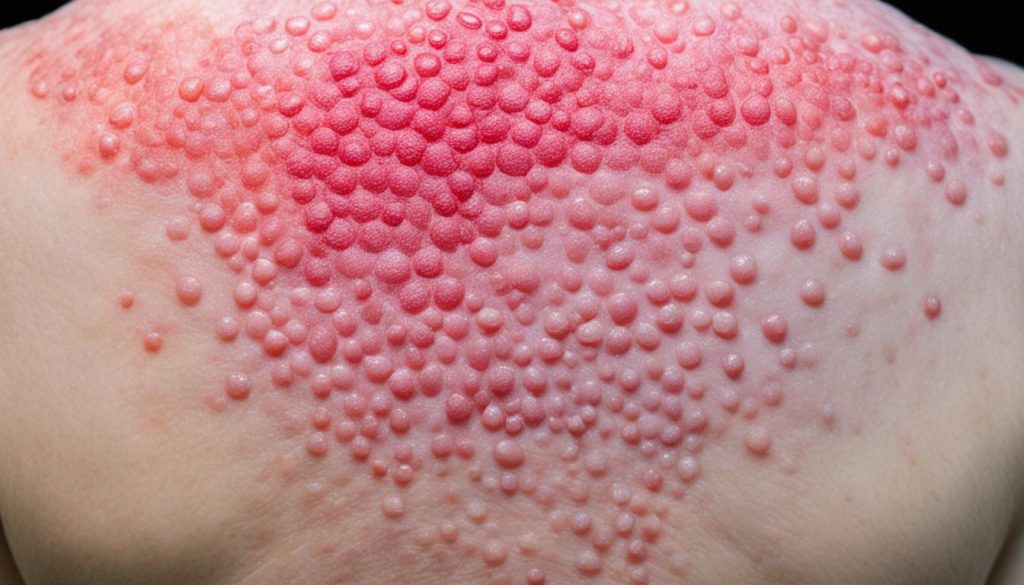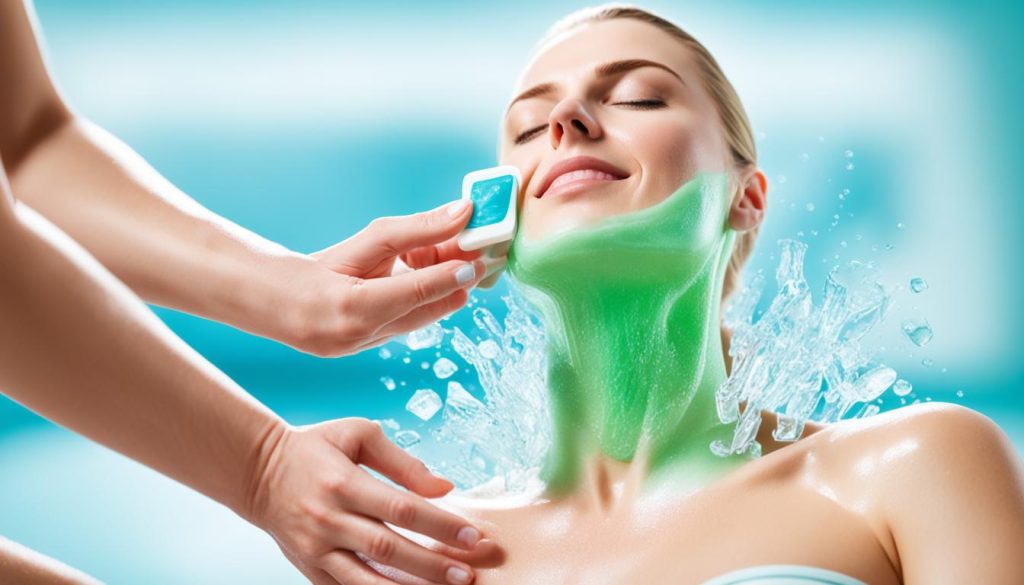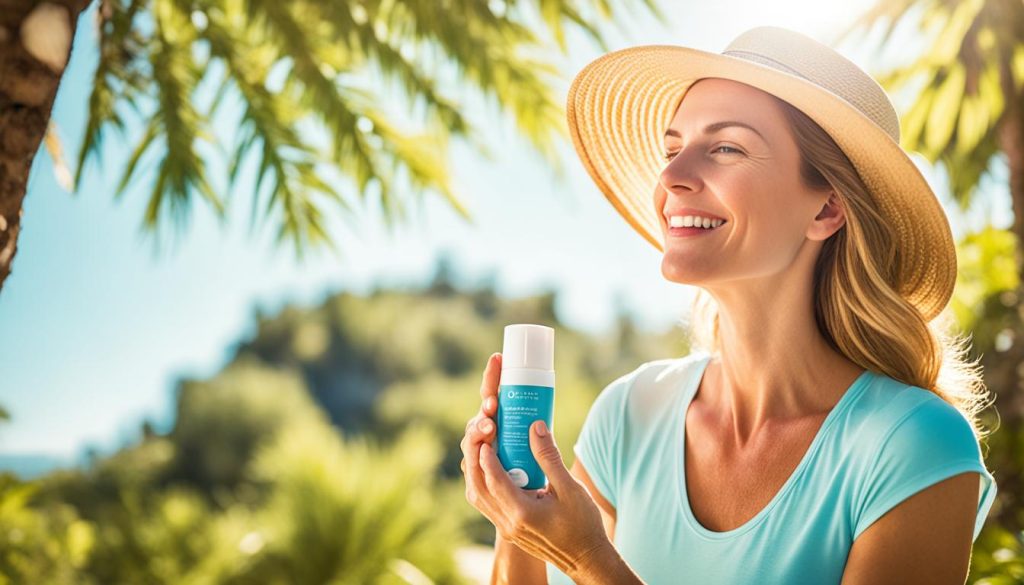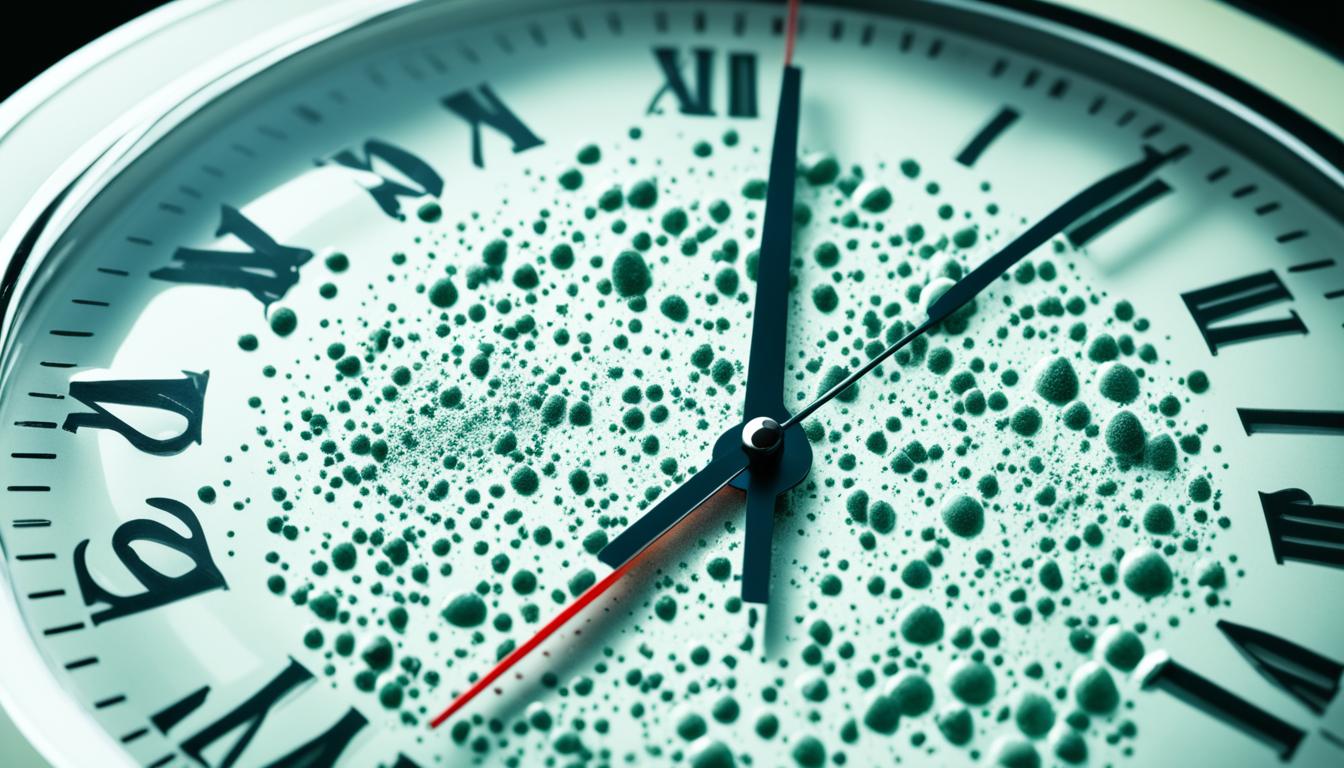Heat rash, also known as prickly heat or miliaria, is a common and itchy skin rash that occurs when sweat glands become blocked. It typically causes tiny red spots, clear blisters, or lumps on areas where sweat collects, such as the armpits, chest, groin, and skin folds. Heat rash is more common in babies and people adjusting to warmer temperatures. While heat rash usually goes away by itself, it can take up to 3 weeks to fully resolve.
Dealing with the discomfort of heat rash can be frustrating, but understanding its timeline and finding relief are essential for a smooth recovery. In this article, we will discuss the duration of heat rash, healing time, and the recovery period. We will also provide tips on managing the symptoms and preventing future occurrences.
Symptoms and Causes of Heat Rash
Heat rash, also known as prickly heat or miliaria, can cause discomfort and irritation. Understanding the symptoms and causes of heat rash is crucial for effective prevention and treatment.
Heat Rash Symptoms
Heat rash typically presents as:
- Tiny red spots on the skin
- Clear blisters
- Lumps or bumps
These symptoms are often accompanied by an irritating, itchy, and prickling sensation. Heat rash can occur on various parts of the body, including the armpits, chest, groin, and skin folds.
Heat Rash Causes
Heat rash occurs when sweat ducts become blocked or inflamed due to heat and high humidity. It is more common in individuals whose sweat glands haven’t fully developed, such as babies, and in those who are adjusting to warmer temperatures. Additionally, certain factors can increase the risk of developing heat rash:
- Wearing too many clothes in warmer temperatures, preventing adequate sweat evaporation
- Lying in bed for extended periods, restricting air circulation
It’s important to note that heat rash can occur in anyone, regardless of age or activity level. Taking precautions to prevent heat rash is essential for maintaining skin health in warm environments.

| Symptoms | Causes |
|---|---|
| Tiny red spots | Sweat duct blockage/inflammation |
| Clear blisters | High heat and humidity |
| Lumps or bumps | Incomplete sweat gland development (babies) |
| Itching and prickling sensation | Wearing excessive clothing in warm temperatures |
How Long Does It Take Heat Rash to Go Away? – Diagnosing and Treating Heat Rash
Diagnosing heat rash is often straightforward and can be done through a simple visual examination. The characteristic appearance of tiny red spots, clear blisters, or lumps on the skin in areas of sweat accumulation is usually enough to confirm the diagnosis. However, in some cases, a doctor may need to take a sample of fluid from inside the blisters to rule out other potential skin conditions.
When it comes to treating heat rash, the primary focus is on keeping the affected skin cool and dry. Here are some effective treatment options:
- Cool baths or showers: Soothing the affected area with cool water can help alleviate discomfort and reduce inflammation. Avoid using excessively cold water as it may shock the skin.
- Avoid excessive showering or bathing: Prolonged exposure to water can strip the skin of its natural oils and worsen heat rash. Limit showers or baths to a reasonable duration.
- Over-the-counter medications: Topical treatments like calamine lotion or steroid creams can provide relief from itching and reduce inflammation.
- Wear loose, breathable clothing: Opt for lightweight fabrics, such as cotton, which allow for better airflow and help prevent further irritation.
- Avoid irritating fabrics: Synthetic materials or rough textures can exacerbate heat rash symptoms. Stick to soft materials that won’t rub against the skin.
In severe cases where the heat rash becomes infected, antibiotics may be necessary to clear the infection and promote healing. If you are uncertain about the severity of your heat rash or if it persists despite home remedies, it is important to consult a healthcare professional for an accurate diagnosis and appropriate treatment.
| Heat Rash Treatment | Benefits | Considerations |
|---|---|---|
| Cool baths or showers | Relieves discomfort and reduces inflammation | Avoid using excessively cold water |
| Avoid excessive showering or bathing | Prevents skin dehydration and aggravation of heat rash | Limit showers or baths to a reasonable duration |
| Over-the-counter medications | Provides relief from itching and reduces inflammation | Follow the instructions and discontinue if adverse reactions occur |
| Wear loose, breathable clothing | Allows airflow and minimizes further irritation | Avoid tight-fitting clothes that may rub against the skin |
| Avoid irritating fabrics | Reduces friction and minimizes heat rash symptoms | Choose soft materials that won’t irritate the skin |
By following these treatment measures and taking steps to prevent heat rash, you can effectively manage and alleviate the discomfort associated with this common condition.

Prevention Tips for Heat Rash
Heat rash is a common and uncomfortable condition that can often be prevented with some simple precautions. By following these tips, you can minimize your risk of developing heat rash and keep your skin cool and comfortable.
- Stay cool: It’s important to avoid overheating and excessive sweating, as this can lead to heat rash. Seek out air-conditioned environments or stay near fans to keep your body temperature down.
- Wear breathable clothing: Choose loose-fitting garments made of lightweight, breathable fabrics like cotton. These materials allow air to circulate and prevent sweat from becoming trapped against your skin.
- Avoid irritants: Certain fabrics and materials can aggravate the skin and contribute to heat rash. Steer clear of synthetic materials or rough-textured clothing that can cause friction and irritation.
- Keep the skin dry: Moisture on the skin can worsen heat rash. After sweating, shower or bathe with lukewarm water to cleanse the skin and remove sweat and grime. Pat yourself dry gently with a towel.
Additionally, it’s important to avoid using ointments or oils on the skin, as they can block sweat glands and exacerbate heat rash. Instead, focus on keeping your skin clean and well-ventilated to prevent sweat buildup and blockage.
To visually represent the prevention tips for heat rash, here’s a table summarizing the key points:
| Prevention Tips for Heat Rash |
|---|
| Stay cool |
| Wear breathable clothing |
| Avoid irritants |
| Keep the skin dry |
Follow these tips to minimize your risk of developing heat rash and enjoy a comfortable, rash-free summer!

Living with Heat Rash
Managing heat rash symptoms and living with heat rash requires a proactive approach to keep the skin cool and dry. Here are some practical tips:
- Choose lightweight, breathable clothing: Opt for loose-fitting garments made of cotton to allow air circulation and minimize friction on the affected areas.
- Maintain a cool sleeping environment: Use fans or air conditioning to keep the bedroom temperature comfortable and prevent excessive sweating.
- Avoid overdressing: Don’t layer up with too many clothes, as it can trap heat and worsen the irritation caused by heat rash.
- Avoid tight-fitting clothes: Tight clothing can cause further irritation and prevent the affected skin from breathing properly.
If your heat rash persists or worsens despite these measures, it is advisable to seek medical advice. A healthcare professional can provide additional guidance and recommend suitable treatments to alleviate discomfort.
Recommended Measures for Living with Heat Rash
| Recommendation | Explanation |
|---|---|
| Choose lightweight clothing | Opt for breathable fabrics like cotton to allow airflow and minimize irritation. |
| Maintain a cool environment | Use fans or air conditioning to keep the temperature low and reduce sweating. |
| Keep affected areas clean and dry | Gently cleanse the skin and ensure it remains dry to prevent further irritation. |
| Avoid excessive heat and humidity | Avoid situations that can trigger excessive sweating and worsen the condition. |
By following these recommendations and staying diligent in managing heat rash symptoms, you can minimize discomfort and promote quicker healing.
Complications and When to Seek Medical Help
Most cases of heat rash resolve on their own without medical intervention. However, it is important to seek medical help if the rash becomes infected, with symptoms such as spreading redness, pus, fever, or swollen lymph nodes. Severe itchiness or symptoms of heat-related illnesses like dizziness, confusion, or trouble breathing should be treated as medical emergencies and require immediate attention.
Heat rash is usually a benign and self-limiting condition that does not pose significant health risks. However, in some cases, complications can arise. One possible complication is bacterial infection of the affected skin. The warm and moist environment created by heat rash can make it easier for bacteria to multiply and cause an infection. If the rash becomes painful, swollen, and shows signs of spreading redness, it may be a sign of infection.
When to See a Doctor for Heat Rash?
While most cases of heat rash can be managed at home with simple self-care measures, there are certain circumstances where it is advisable to seek medical help:
- If the heat rash does not improve or worsens after a few days of self-care
- If the rash becomes increasingly painful, swollen, or shows signs of spreading infection
- If you develop a fever or experience other symptoms of infection, such as pus or swollen lymph nodes
- If the itching becomes severe and affects your daily activities or sleep
- If you have symptoms of heat-related illnesses, such as dizziness, confusion, or difficulty breathing
A healthcare professional will be able to examine the rash, evaluate its severity, and provide appropriate treatment or further medical advice. They may prescribe topical medications or oral antibiotics if an infection is present. Seek medical help if you are unsure about the severity of your heat rash or if you have any concerns.

Conclusion
Heat rash, also known as prickly heat or miliaria, is a common and temporary condition that can cause discomfort and itchiness. The good news is that heat rash usually disappears on its own within a span of 2-3 weeks, without the need for medical intervention. However, there are ways to relieve the symptoms and expedite the healing process.
To find relief from heat rash, it is crucial to keep the affected skin cool and dry. Avoid excessive sweating and humidity by seeking shade or staying in air-conditioned environments. Wearing loose cotton clothing that allows the skin to breathe can also help. Additionally, over-the-counter treatments such as calamine lotion or steroid creams can provide relief from itching and inflammation.
If the heat rash persists or worsens, or if you experience symptoms of infection such as spreading redness, pus, fever, or swollen lymph nodes, it is important to seek medical help. Similarly, severe itchiness or symptoms of heat-related illnesses like dizziness, confusion, or trouble breathing should be treated as medical emergencies and require immediate attention.
By taking proper care, practicing preventive measures, and seeking medical assistance when necessary, heat rash can be effectively managed and resolved. Remember to stay cool, keep the skin dry, and follow the recommended treatment timeline to achieve the best results.




